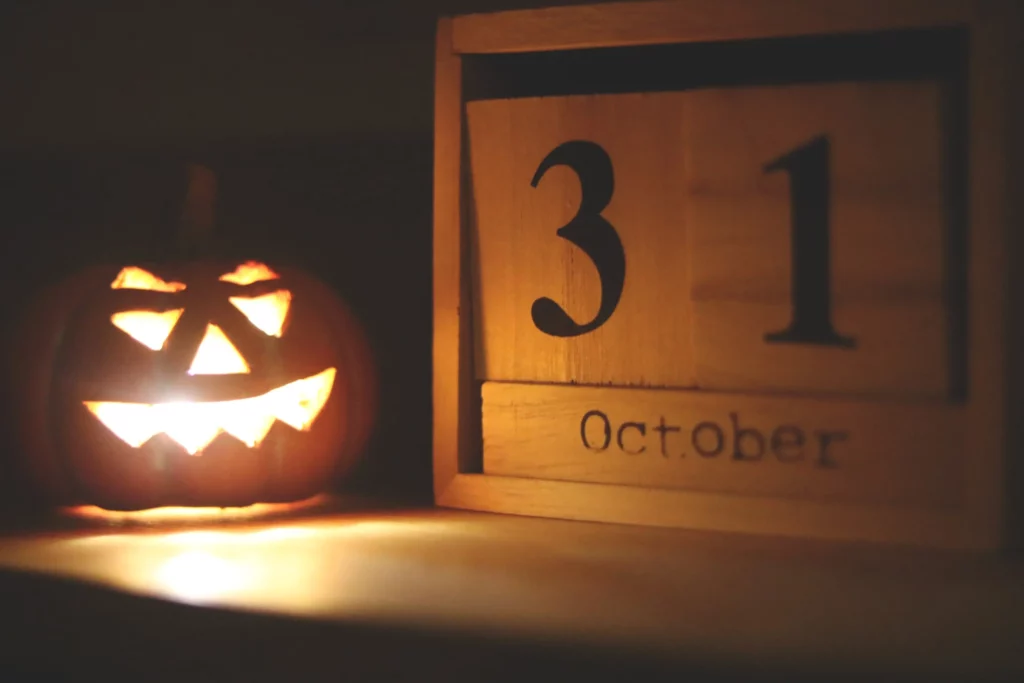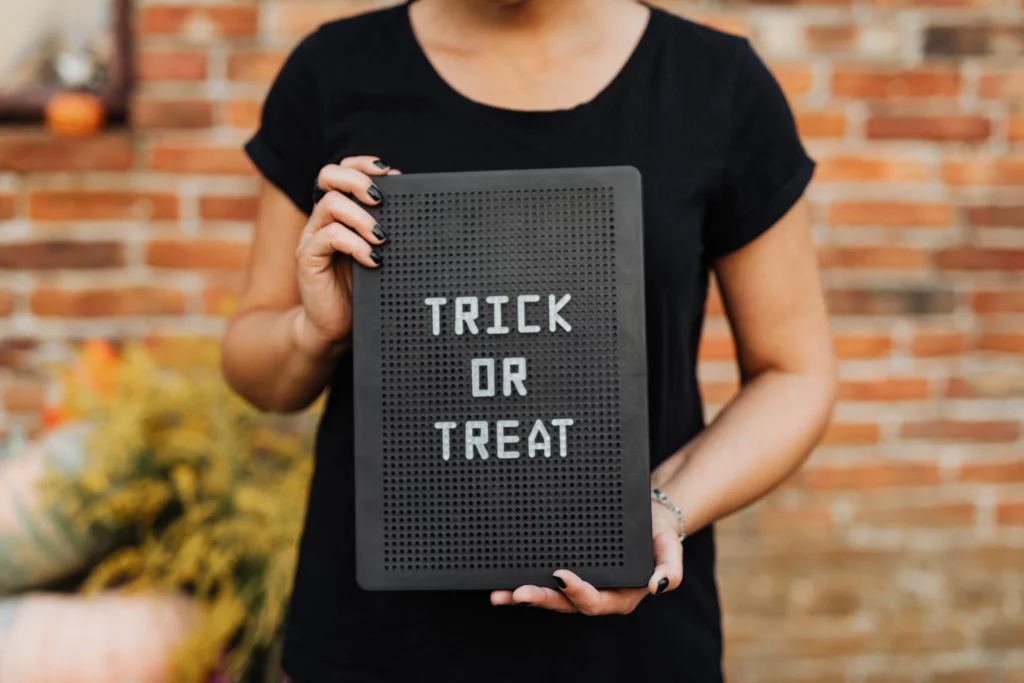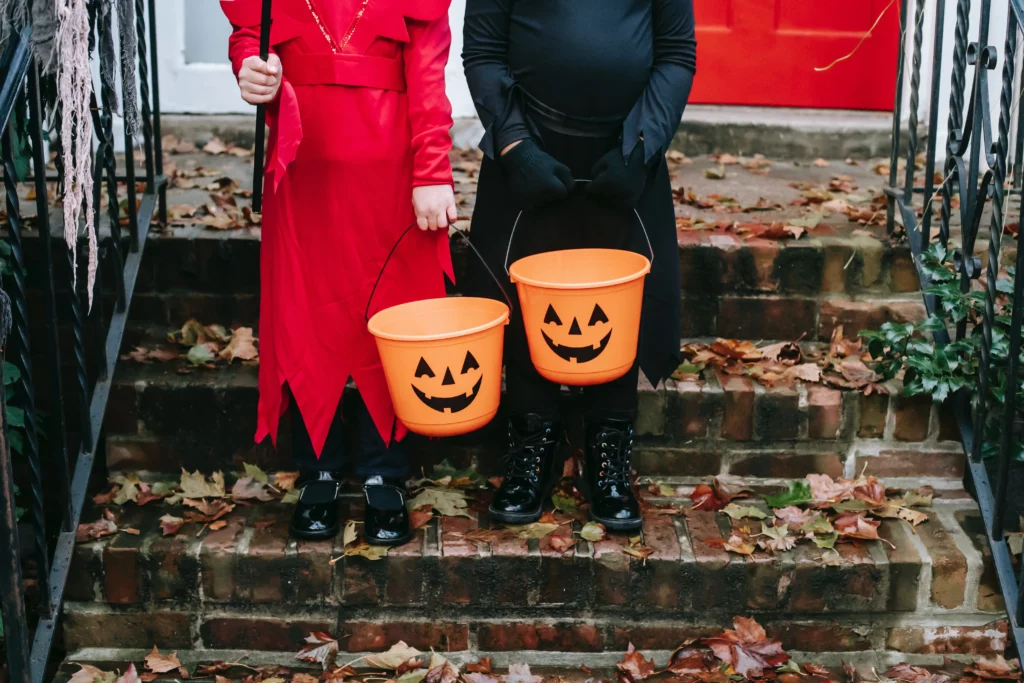Published: October 17th, 2023 at 12:31 PM
As Halloween nears, concerns intensify about the potential of encountering Halloween candy laced with drugs, particularly amidst growing anxieties around fentanyl exposure in children.
We will analyze stories that have fueled the warnings of drugs in Halloween candy, as well as explain why it’s crucial to dissect fact from fiction and arm oneself with knowledge to ensure a safe Halloween!

The Stories of Drugs in Halloween Candy
1964: In a bizarre case, a New York woman, Helen Pfeil, was found handing out ant poison and dog biscuits on Halloween. While she claimed it was a joke targeting older trick-or-treaters, it was hardly seen as amusing by law enforcement.1
1974: Ronald O’Bryan of Texas became the face of Halloween candy fears when he distributed cyanide-laced pixie sticks to five children, including his son, Timothy. Tragically, Timothy consumed the candy and died. Investigations revealed that O’Bryan had life insurance policies on his children. He was later convicted and executed.2
Despite these incidents, it’s crucial to note that they weren’t random acts against unknown trick-or-treaters. O’Bryan, for instance, specifically targeted his children and their friends.
Why The Halloween Candy Drug Scare is Mostly Unfounded
While it’s crucial to acknowledge past incidents, it’s equally essential to confront the myths with hard data. So, how often do harmful substances actually find their way into Halloween treats?
1. Extensive Research by Experts: Sociologists Joel Best and Gerald T. Horiuchi have been at the forefront of demystifying the Halloween candy scare. Their extensive studies into reported cases of “Halloween sadism” yielded a startling finding: most incidents either couldn’t be conclusively linked to Halloween or were significantly overstated3.
2. Rarity of Authentic Reports: Since the 1980s, numerous cases have been reported about tampered candy. However, when investigated thoroughly, a vast majority turned out to be hoaxes, misunderstandings, or accidents. The genuine instances where drugs or harmful substances were intentionally added to Halloween candy are, statistically speaking, extremely rare.
3. Economic Perspective: From a purely economic standpoint, introducing drugs—especially potent and expensive ones like fentanyl—into candy and then distributing them for free to unsuspecting children makes little sense. Drugs are costly, and there’s no apparent benefit for someone to distribute them this way.
Myth Versus Reality
The power of folklore and collective fear is undeniable. One story of “Halloween candy laced with drugs” can spark widespread panic, leading parents to believe such incidents are common.
But when the myth is contrasted with the statistical reality, it becomes evident that the chances of encountering drugged Halloween candy are minuscule.
Media Amplification: Often, isolated incidents receive disproportionate media coverage, making them seem more prevalent than they truly are. When combined with the power of social media sharing, a single event can be magnified, leading to heightened and often unwarranted anxiety.
Contextual Understanding: To provide further context, consider this: the odds of finding harmful substances in Halloween candy are lower than many everyday risks, such as car accidents or household injuries. Yet, our collective fears don’t always align with these statistical realities.

Understanding the Halloween Candy Drug Fear
Let’s delve into the psychological and societal factors that have kept this Halloween myth alive and well.
1. The Power of Anecdotal Evidence
Humans are inherently wired to remember stories over statistics.
When you hear about a lone incident where drugs were found in Halloween candy, it resonates more deeply than a dozen studies saying otherwise.
It’s a protective instinct. Your brain is designed to prioritize potential threats, no matter how rare, to keep you and your loved ones safe.
So, while statistically, one is unlikely to ever come across Halloween candy laced with drugs, the mere thought of it happening to someone else causes an instinctual reaction to be cautious.
2. The Ripple Effect of Fear
Fear is contagious. One parent’s concern can quickly spread across a community, especially if that fear is for the safety of children.
The neighborhood grapevine, often powered by well-meaning folks, amplifies isolated incidents, making them seem like a widespread trend.
This ripple effect reinforces the belief in the myth, even when objective evidence suggests it’s improbable.
3. Social Media: The Modern-Day Campfire Storyteller
Enter the age of social media, where tales of Halloween candy laced with drugs can spread faster than a witch on a broomstick.
Platforms like Facebook, Twitter, and TikTok become breeding grounds for such stories, often shared without proper verification.
A single post, be it a personal account or an attention-grabbing headline, can be shared thousands of times, giving it an aura of truthfulness.
This digital echo chamber only serves to solidify the myth in the collective consciousness.
4. The Unknown Factor
Halloween, for all its fun, is a celebration of the eerie and the unknown.
This natural association with mystery can make it easier for parents to believe in the possibility of hidden dangers.
The act of accepting candy from strangers, even neighbors, adds to the vulnerability parents feel for their trick-or-treating youngsters.
In essence, while the fear of drugs in Halloween candy might be rooted in rare events, it’s the combination of our brain’s protective wiring, societal amplification, and the power of modern communication tools that keep it alive.
eing informed and understanding these underlying causes can help in differentiating between myth and reality.

Fentanyl in Halloween Candy?
In recent years, fears about Fentanyl in Halloween candy have surged. In fact, tens of thousands of people have started searching about what fentanyl looks and tastes like during this time of year.
This fear, although rooted in the dangerous nature of the drug, is also statistically rare in the context of Halloween.
Fentanyl, which is lethal even in minute amounts, is primarily known for its illicit use and its association with overdose deaths.
While the safety of children remains paramount, it’s essential for parents to approach the Halloween season with informed caution, rather than undue panic.
There has been a rise in Fentanyl-related child fatalities, though not in association with Halloween.
Typically, these tragic incidents occur when a child is in unfamiliar settings like an Airbnb, at a friend’s house, or when exposed to a parent or guardian’s drug use, leading to unintended or sometimes intended access.
Rainbow Fentanyl Fears
Rainbow Fentanyl refers to Fentanyl that has been dyed different colors, often giving it an appearance similar to candy or brightly colored sugar crystals.
Given its deceptive appearance, it’s completely understandable for parents to have concerns about such a drug, especially during Halloween.
However, it’s crucial to note that, as of now, there hasn’t been a confirmed link between Rainbow Fentanyl and Halloween candy.
What does Fentanyl Look Like?
Fentanyl frequently comes in the form of counterfeit pills designed to resemble genuine prescription medications.
These imitation pills, often tinted green, blue, or pale, can have markings like v48, K9, M30, or 215, though other designations can also exist.
While pure fentanyl is a white powdery substance, when combined with other drugs, it may take on a brownish hue, indicating enhanced potency.
Differentiating these from actual prescription pills by mere visual inspection can be challenging.
For more information visit our article on What Does Fentanyl Look Like?
What Does Fentanyl Taste Like?
While some individuals describe the taste of fentanyl as exceedingly bitter with an unpleasant aftertaste, others mention certain forms can be sweet, depending on its composition and formulation.
However, it’s imperative to emphasize that one should never attempt to taste it to determine what fentanyl tastes like.
Its potency is such that even a tiny amount can be lethal, making any casual interaction with it extremely dangerous.

Parents, Balance Vigilance with Rationality
While understanding the low likelihood of such events, it’s essential for parents to strike a balance between being vigilant and staying rational.
Tips for Parents to Safely Inspect Halloween Candies
| Safety Aspect | Description |
| Initial Check | Examine the exterior packaging for any signs of tampering or unusual appearance. |
| Familiar Brands | Stick to recognized and trusted brands. Unknown candies or homemade treats from strangers should be approached with caution. |
| Seal Verification | Ensure that candies are in their original, sealed packaging. Avoid anything that looks resealed or repackaged. |
| Solid Candies vs. Liquids | Solid candies like chocolates or hard candies are less likely to be tampered with than liquid-based treats. |
| Open with Care | When in doubt, open the candy over a sink or garbage to ensure nothing unexpected spills out. |
| Engage Your Kids | Make candy inspection a fun activity. Teach them about safety in a light-hearted manner without instilling fear. |
The Importance of Not Overreacting
While it’s natural for parents to worry about their child’s safety, overreacting can cast a shadow over the festive spirit.
Remember, Halloween is a time for joy, laughter, and making memories. Teach your kids about safety, but also let them enjoy the thrill of trick-or-treating.
Safety doesn’t have to come at the cost of enjoyment; it’s all about balance.
Have a Safe and Happy Halloween
While it’s natural for concerns to arise during festive seasons, being informed and cautious can make all the difference.
Equip yourself with knowledge, practice vigilant safety measures, and keep the essence of Halloween alive—fun, laughter, and sweet memories.
And although the whole point of Halloween is to be spooked, it’s probably best not to be spooked about this.


